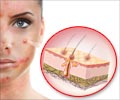Frequently Asked Questions
1. Which doctor should I ideally see if I am suffering from albinism?You should see an ophthalmologist and a dermatologist.
2. Are there any developmental problems associated with ocular albinism?
Usually there are no developmental problems associated with ocular albinism but in rare occasions when there is a chromosomal deletion within the gene it can result in deafness, developmental retardation, and mildly shortened stature.
3. Who is at risk of albinism?
Albinism is a hereditary disorder and hence the following people are at a higher risk of developing the disease:
- Children of parents who have albinism.
- Children of parents, who do not have albinism, but carry the altered genes that cause this disorder (carriers).
- A positive family history for albinism.
- Puerto Rican ancestry significantly increases the risk of Hermansky-Pudlak syndrome.
4. What are the chances that an individual is affected by albinism?
The albinism gene is recessive and hence does not cause albinism unless a person inherits two copies of the gene for albinism in other words if there is no gene that makes the normal pigment.
If a person has one gene for normal pigmentation and one gene for albinism, he or she will have enough genetic information to make normal pigment and will not suffer from the disease.
When both parents carry the gene and neither of them have albinism (carriers) then there is 25% chance that the baby will be born with albinism. This type of inheritance is called autosomal recessive inheritance. On the other hand two people with albinism will not automatically produce an albino child although the risks are several times higher. Therefore in conclusion researchers say that the disease is a mystery and more research has to be done in this area to completely understand it.
5. What is the prognosis of albinism?
Albinism does not usually affect the lifespan. However, the lifespan can be shortened in the Hermansky-Pudlak syndrome due to lung disease or bleeding problems. People with albinism may have to limit their activities because they cannot tolerate sun exposure.










